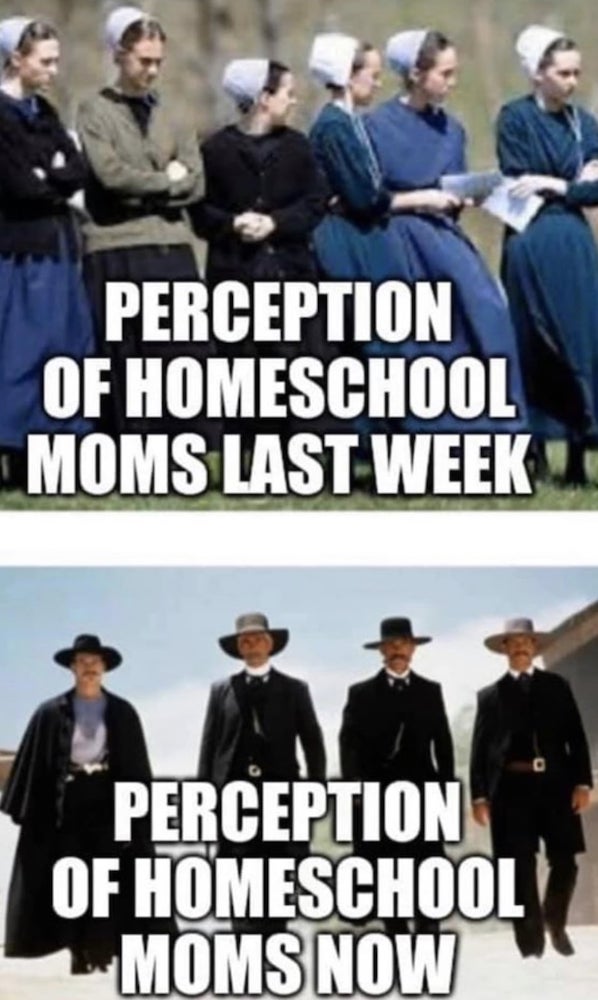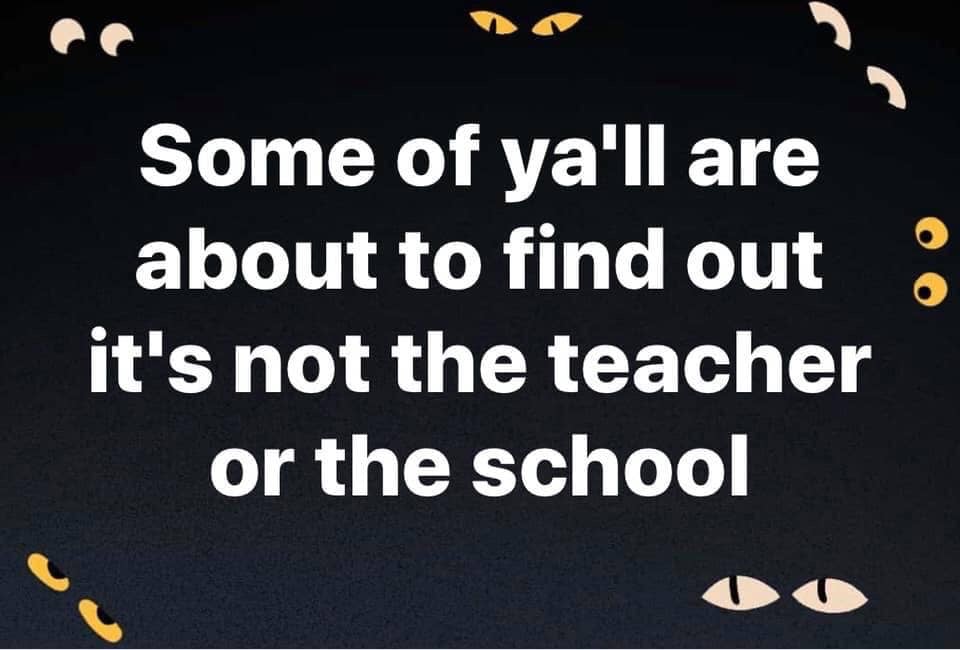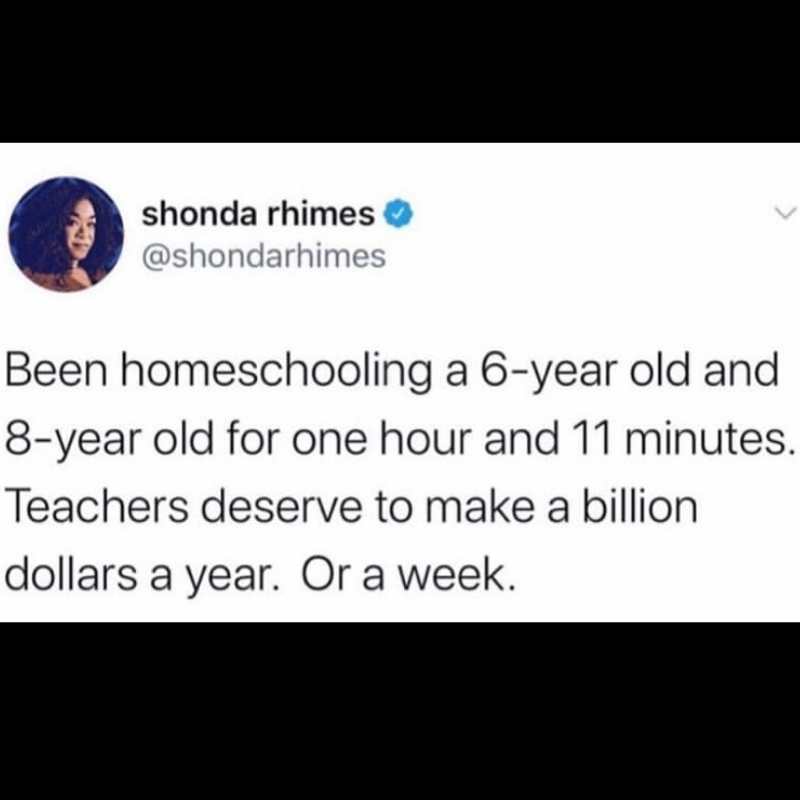Unless you’ve tried homeschooling with one of those online curriculum like K12 where you have to log on so many hours per day, this quarantine homeschool situation is NOT normally what homeschool is like.
I want to quickly clarify that what’s been going on may not be what we truly experience as homeschoolers, and it sort of breaks my heart to know that many parents think this is what it’s like.
On the other hand, one thing I loved hearing lately is how many parents are getting to know their kids a little better, getting them more involved in housework, and getting creative with things to do other than playing video games. This whole experience has really opened the eyes of many and has made parents realize that this whole life of busyness in today’s culture could be a danger to our families really getting to know each other on a deeper level.
That right there is truly the beauty of homeschool. But I’m also aware of the struggles that parents and guardians have been facing due to the forced homeschool in place.
You’re doing the best you can do, but please know that this is not really what homeschool may look like for most homeschoolers.
Trying to do classroom schooling at home where there is no classroom filled with other kids is very different than the typical homeschools I know. Some homeschools are blessed to have a designated room for schooling, but we do not.
First, your kids who are normally in a classroom setting… well… they’re normally in a classroom setting, where everyone in the class is expected, and the majority do, listen to and respect the teacher’s authority at any given moment. They’re expected to do their assignments or there will be consequences. Our children know this.
While they’re still expected to listen and be respectful at home or get consequences, it’s still very different than being in a classroom full of other kids who are expected to do the same. Transitioning to that same thing at home can be very difficult, and it has been for us. My once-homeschooled thirteen-year old is now having trouble focusing on his school assignments at home, whereas if he was at school, he wouldn’t be having so many issues getting it done.
I’ve found that homeschooling has caused me to be more structured when it comes to routines around our house; because if not, it’ll be total chaos. So, if you’re not used to having a schedule during the day all day while the kids are home, it can be really difficult to get used to when you’re now forced to get your kids to do their schoolwork at home from Google Classroom. Which leads me to my next point…
Second, when you homeschool, you pick out your OWN curriculum that YOU choose for your child. During this stay-at-home thing, you were given multiple sites and logins, etc. that you had to figure out how to use, plus, I don’t remember it coming with a teacher’s manual. You don’t know exactly where they were at in their curriculum because the teacher has that.
You’d still have to figure out that stuff if you chose your own curriculum, but at least you still get to choose it. I love looking through curriculum books and choosing the best ones for our children. This is another pro to homeschooling. Throughout the years, I’ve changed curriculum to best suit the learning needs of each individual child because they’re all different.
The one-size-fits-all approach in classroom schooling is not how it normally works in homeschool.
Third, libraries, parks, restaurants, and churches are not normally closed. We visit the library about once every two weeks, and we go to parks at least once per week. This gets us out of the house in a different setting, and allows us to have a different scenery while doing some school activities and engaging with others. We attend homeschool field trips and other activities as well.
Fourth, kids are normally allowed in the stores. We grocery shop and run errands once per week. The kids come with me, and they help do the shopping, unloading, picking out produce, etc. Around here, our kids haven’t been allowed in the stores, so they’ve pretty much been stuck at home. Thankfully, we have acres of backyard to play in and a bayou to fish in, so that hasn’t been much of an issue for us.
If you feel like you’re failing them and they’re going to get behind, please calm down. Missing even a few months of school will not hurt them as long as they’re still reading and writing a couple days a week and reviewing things on their level. Reading every day is even better.
Keeping that brain exercising and getting lots of outside play will also cause them to learn more than we think! Getting more time to use their hands for coordination is a great brain exercise for young ones.
What is happening is not home schooling.
It is not distance learning.
It is not online schooling.
There are philosophies and research guiding those ways of teaching and learning; theories and pedagogies that are enacted in intentional ways. So, we need to guard against using language that we already have about education.
…
So, let’s call this what it is: Covid-19 Schooling; or better yet, Teaching and Learning in Covid-19.
What we’re doing today is teaching and learning to be in Covid-19.
Excerpt from AJC.com, written by Maureen Downey
What our typical homeschool day looks like
In our homeschool, we read a few scriptures in the morning and discuss them over coffee on the couch, and sometimes while engaging in drawings and coloring about what we’re talking about. Then, 4 out of the 5 days they make their own breakfast while I start laundry or check emails.
We then move on to either Math or Reading assignments where we alternate time with me. I may spend 5-15 minutes with each child explaining a new lesson, and then set them up with a new activity/worksheet to work on while I work with the other child. This rotation happens maybe 4 times, depending on what we’re working on, for a total of about 2 hours.
Whenever I see their brains are frustrated, they get a 5-10 minute outside brain break. Arts and crafts are done together.
I didn’t choose homeschool because I wanted to do classroom schooling sitting all day at a desk/table AT HOME. That actually sounds more like sheltering.
I chose homeschool because of the freedom and customization capabilities of learning, the flexibility, and the endless opportunities we’ll have with each child in their early and most vulnerable years. I chose it for the relationship, the closeness, and the effortless imprint I’ll leave on them from being able to spend more one-on-one quality time with them each day.
Don’t get me wrong either — one can certainly accomplish all these things with a child in school, but from my personal experience, it’s been much harder to do, with less time to do it. Now that our oldest is back in school, we do have a better hold on it than we used to, but there is a little less time spent with our child now that he’s in school. So to counteract that, we wake up a little earlier and spend time together in the morning before he goes to school.
There’s definitely pros and cons to everything, including both homeschooling and classroom schooling. So again, I’m not knocking one or the other. This has been my experience.
Us homeschoolers are not that crazy! We usually run a tight ship, but also have lots of free playtime, and are really flexible with our days. Flexibility is my favorite thing about it.
Embrace this forced time at home, learn from it, and grow from it! Take advantage of this time we have now.
I’ve come across some really funny memes, and I’ve seen a few posts from parents who are now forced to implement some type of order and schooling in their homes during the stay-at-home order. Here’s a few for a laugh!!…




But in all seriousness, what you may have experienced or are experiencing is most likely NOT what every full-time homeschooling parent experiences on a daily basis, and I wanted to clarify that!


(and No, I didn’t take this picture for this blog post! This was one of those funny moments when you have kids, and it just so happened to fit right into this a couple months later!)



 Berry Tea Popsicles | Healthier Cool Pops
Berry Tea Popsicles | Healthier Cool Pops